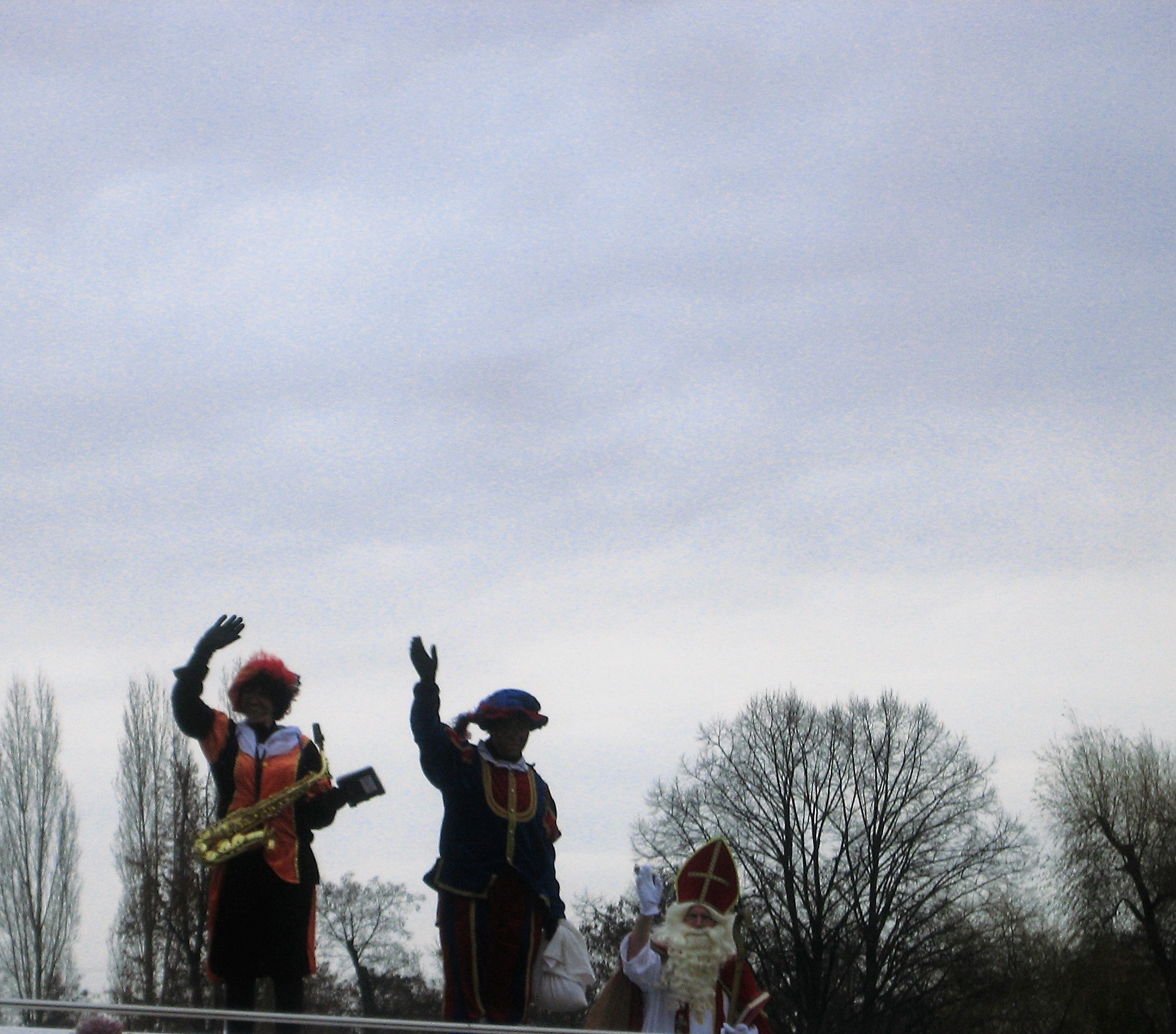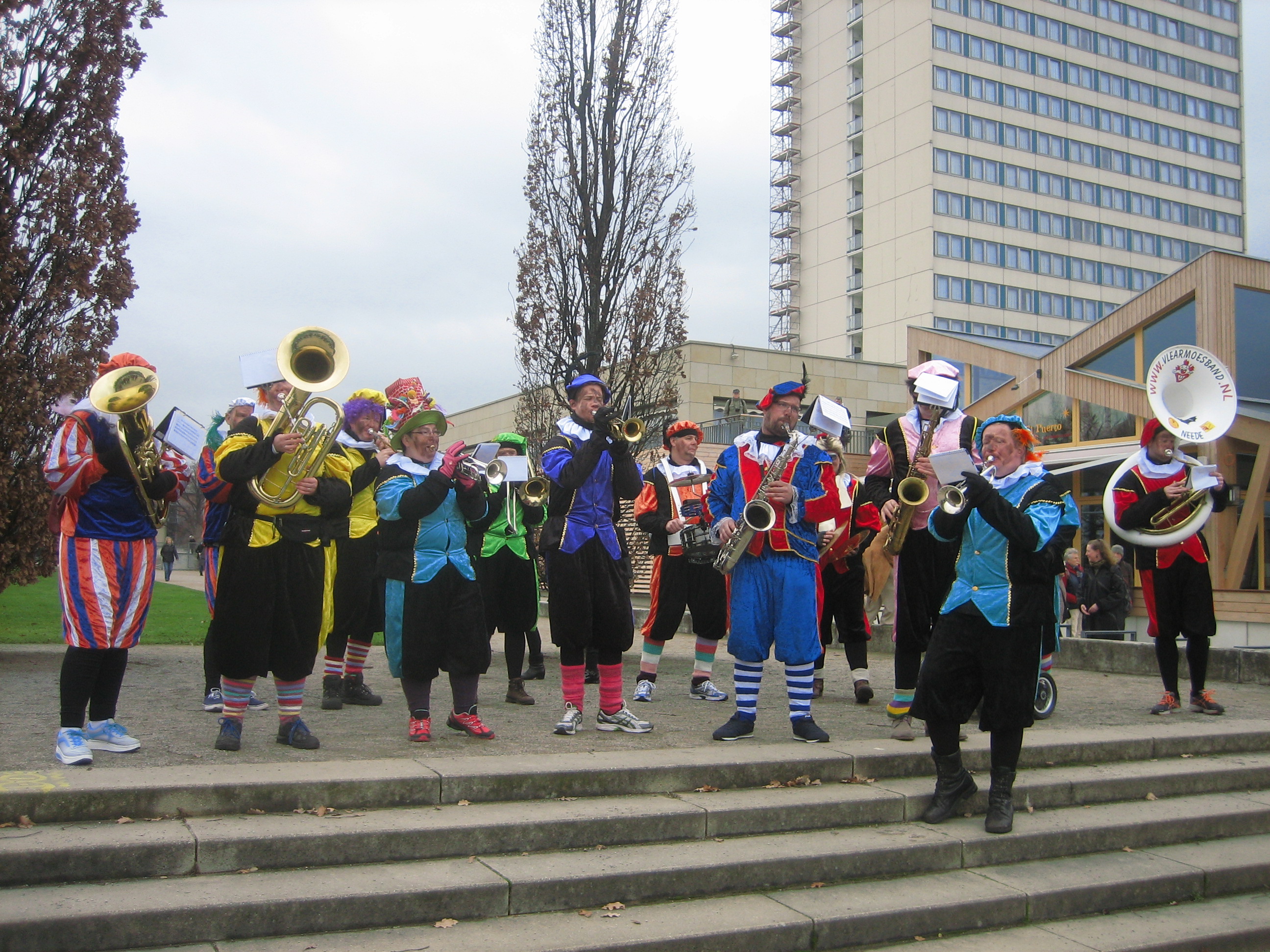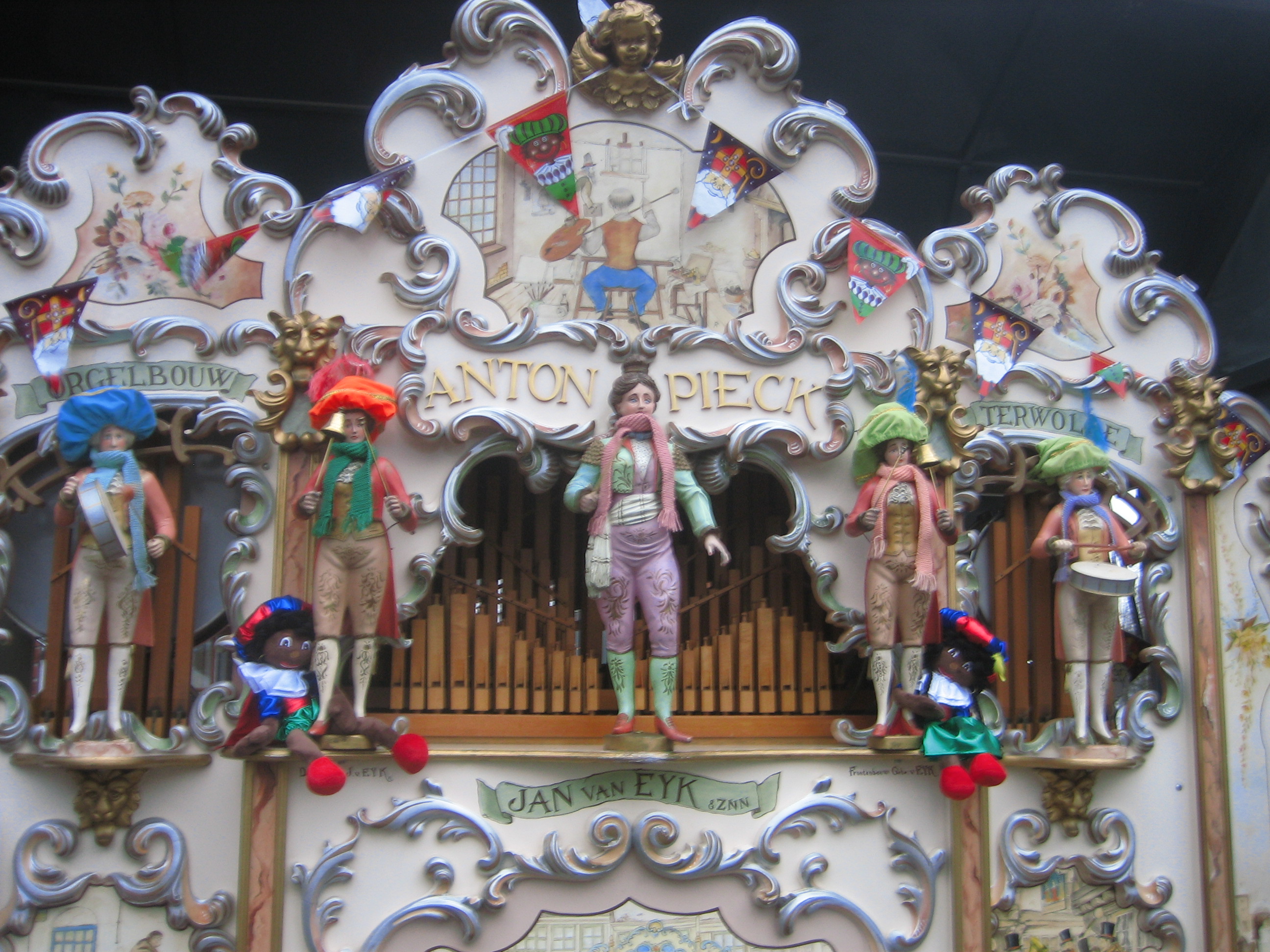"Soot Petes"
or the last straw of the white man
Last weekend, the second weekend of December 2016, Potsdam celebrated once again the arrival of the Dutch Sinterklaas and his companions, the Black Petes. The city likes to distinguish itself because of its internationality and supposed worldliness. Potsdam has a Dutch quarter, a couple of streets which look exactly like a little Dutch town with red brick buildings. There is also a Russian quarter with Russian style log cabins and Park Sanssouci features a Chinese looking – according to European imagination – Tea House. The various castles of the Potsdam region host many mostly stolen items from the Global South which were brought to Potsdam by attention seeking white explorers during colonial times and they have been kept since.
While it is a nice idea to honor the different international influences and Potsdam’s continuing links with other nations and cultures, there is still room for improvement. One has to realize that these links are not always a reason to celebrate, instead there are unaddressed parts of those connections which also – even if silently – speak of oppression and exploitation. These parts tend to reappear in present times in a different but still recognizable attire.
The tradition of the arrival of the white Sinterklaas and his blackfaced Black Petes emulates colonial racism. The Petes are not only his servants but also clown-like figures for the diversion of a (in Potsdam) mainly white audience. During this festivity white Europeans use what they think to be characteristics of Blackness for their own entertainment.

Last year, the City of Potsdam realized that they could not continue to financially support the organization Förderverein zur Pflege niederländischer Kultur in Potsdam, which coordinates the Sinterklaas festivities, if the yearly event continued to include racist elements. To convince the local politicians and sponsors, it took several long meetings with representatives from organizations such as Afrika Rat, ISD, PAWLO, Opfer Perspektive and ourselves, a panel discussions and an open letter by several professors of the University of Potsdam.
As a consequence, there was no Sinterklaas and no Black Petes in Potsdam last year, the festivities were only celebrated with a Christmas market. This year, however, the Förderverein zur Pflege niederländischer Kultur in Potsdam announced they would be able to host the Sinterklaasfest again since they found Dutch partners who agreed to stage Sinterklaas and the Pete’s arrival without blackface. Thus, the City would finance them again. Copying what some Dutch cities have already adopted to avoid the use of blackface, the dressed up musicians and servants were “Soot Petes”, with only some black paint in their faces which they could sell as dirt from the chimney. Like the German Knecht Ruprecht, the Black Petes are said to enter houses through chimneys to deliver presents to children. However, at least one of the Petes still wore an Afro-wig and was therefore still explicitly alluding to the alleged Africaness of the character. Furthermore, many Petes were wearing black gloves and knee-highs.

The Soot Petes were interpreted by the local newspaper Potsdamer Neuste Nachrichten (PNN) as “‘half Black’ (Halbschwarze)”. This invites further interpretation that by using this representation of the Petes the organizers show their clinging to the last straw they could find, their way to adjust the festivities as little as possible. If it is not financed to paint the Petes completely Black, well, then they can still paint them half Black and continue to refuse to take the criticism of this particular part of the tradition seriously. But there is no ‘only a little bit racist‘ or ‘less racist’. A racist act, whether intended or not, will always be racist.
Apart from a smaller number of Afro-wigs and less black color in the faces, the Petes looked exactly as they always did. Here, it is worth mentioning that the attire of the Black Petes is very similar to what enslaved African children had to wear when working as personal servants in white homes or at court. These servants are often included in paintings from the 17th and 18th century.
Another essential part of the Sinterklaas festivities is a market for Dutch crafts and food. The market stalls still featured many figurines looking like completely blackfaced Black Petes. Displaying clownish smiling figures on hats, garlands or as chocolates still fuels the old stereotypes. Those garlands and decorations were probably put up by the vendors individually. It is however the responsibility of the organizers to guarantee that such disturbing imagery disappears from the public space once and for all.

Surprisingly, the Förderverein zur Pflege niederländischer Kultur in Potsdam has decided to warn and dissuade political groups like ours to attend the festivities rather than ensure it to be enjoyable for all potential guests. The local media Märkische Allgemeine Zeitung (MAZ) and Potsdamer Neuste Nachrichten (PNN) circulated contradictory information on the appearance of the Black Petes prior to the festivity itself. This led us to turn to the organizers themselves. We asked for clarification, which they did not give, while recommending us not attend attend Sinterklaas’ arrival ceremony.
We are happy about the fact that the protests against blackfacing have been at least partially successful. Even though, the representation of the Petes should change much more in our opinion, it has been a big step that overt blackfacing is no longer financed. However, the Soot Petes are not an entirely acceptable alternative and a more diverse and less one-sided media coverage about this issue would be desirable. So far, the Förderverein zur Pflege niederländischer Kultur in Potsdam and people in favor of blackfacing receive favorable coverage by the local media, whereas groups that position themselves against it are mostly ignored. Thus, in Potsdam the recurring excuses for blackfacing, which range from a nostalgic attachment to unquestioned traditions to attacks on political correctness, dominate the public media. Furthermore, even though the Petes are no longer in complete blackface at the festival, every picture featured in articles about the Sinterklaasfest show the outdated representations of the Black Petes in blackface. We would like to see newer versions of the Petes without the constant reproduction of stereotypes and to read all about the timely debate about changing aspects of traditions with all the perspectives there are.
Credits // Authors: Lina Fricke, Yann Le Gall, Anna von Rath; Photography: Lina Fricke
